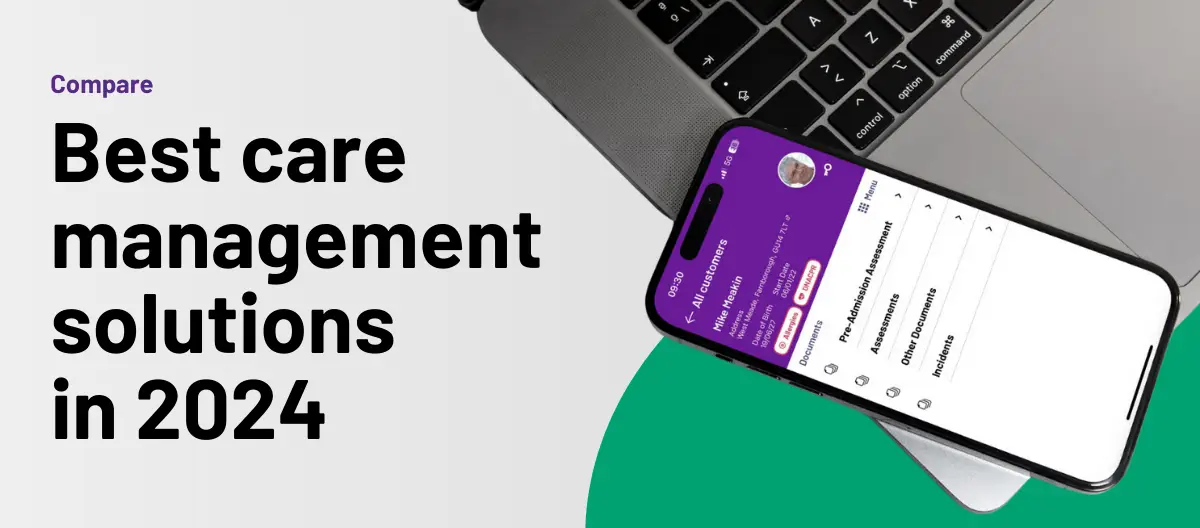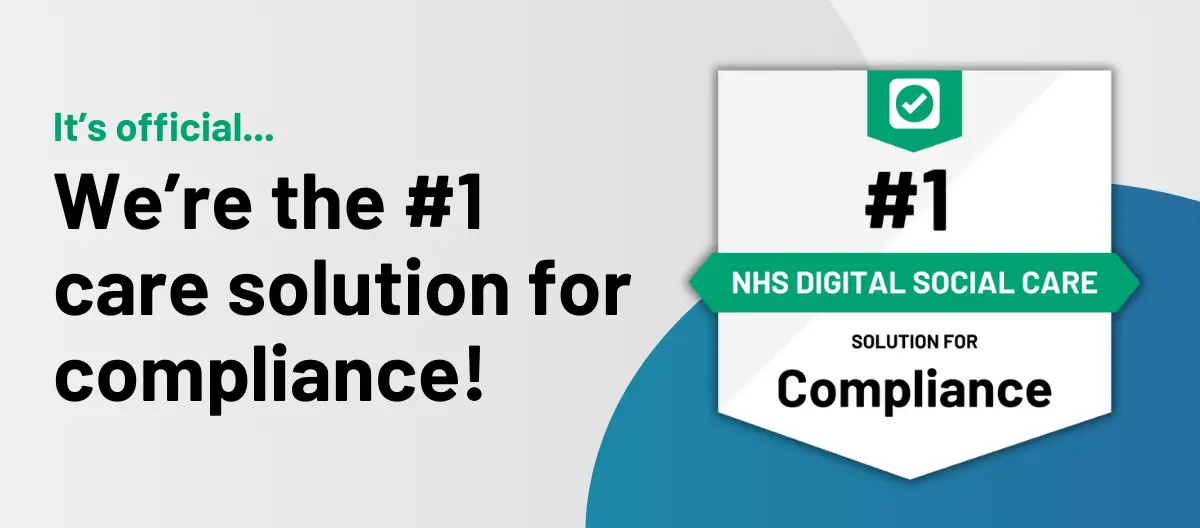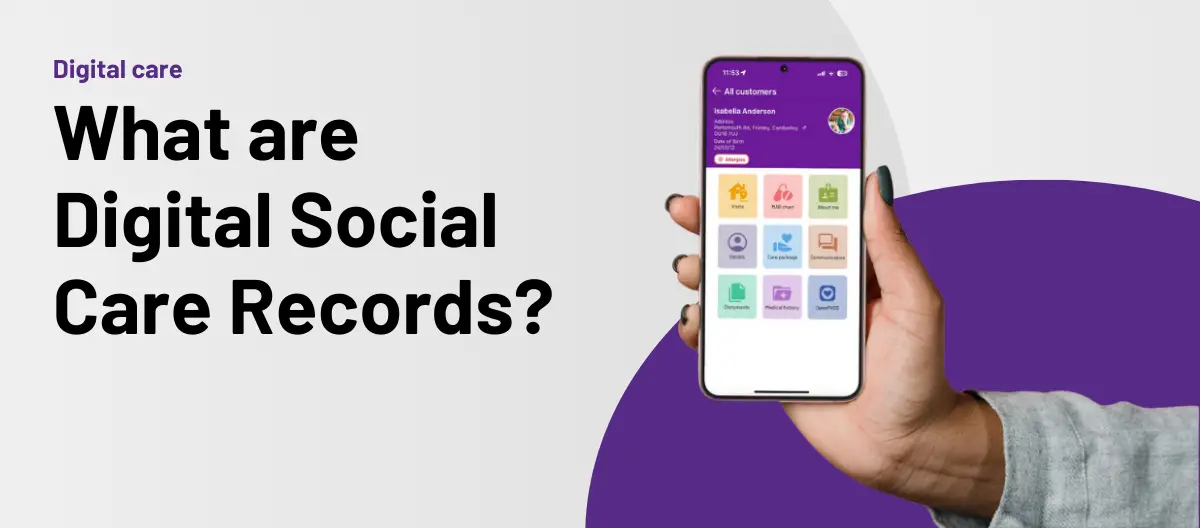In this guide, we’ll walk you through an example of a personalised care plan that will act as a blueprint for delivering individual-focused care. Whether you’re searching for a practical, person-centred care plan example, real-world applications, or personalised templates, you’ve landed in the right place.
Let’s dive right in.
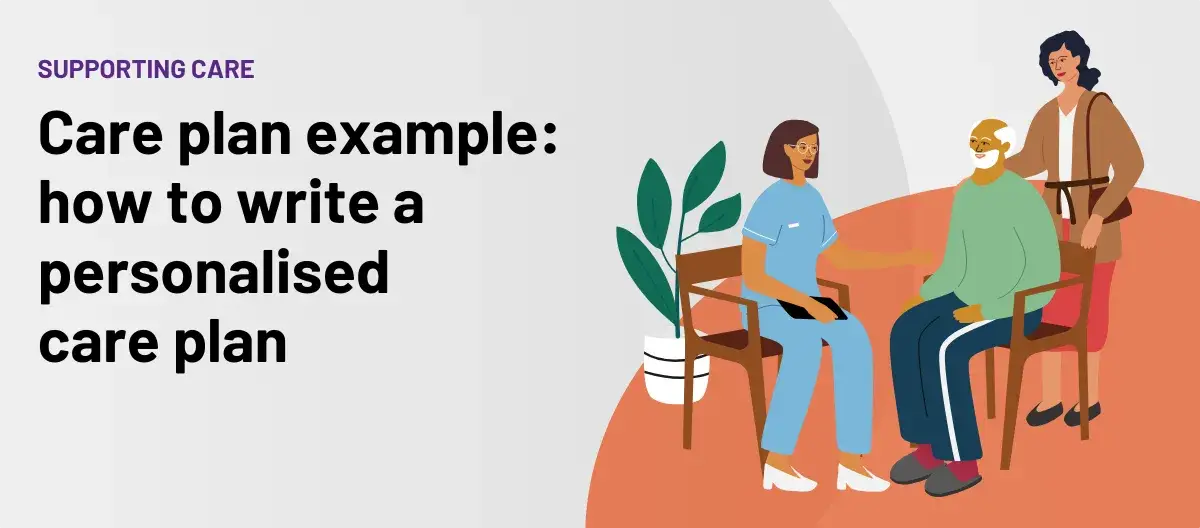
Table of Contents
What is a care plan?
In the fast-paced world of health and social care, it’s crucial to have a well-structured care plan centred on an individual’s unique needs.
These plans aren’t just paperwork; they’re evolving guides that help multidisciplinary teams (MDTs), care recipients, and their families navigate tailored needs, preferences, and daily challenges.
Think of it as a personalised guidebook that helps care providers understand what’s important to the person and how to provide the best care possible.
Why are care plans important?
Personalised and up-to-date care plans are central to giving person-centred care. Here’s why:
- Personalisation: Care plans are designed around an individual’s distinct needs and wishes, making them highly personalised.
- Communication: They ensure that everyone involved in a person’s care is on the same page.
- Efficiency: Care plans help streamline health and social care delivery, making it more effective and efficient.
- Quality of life: By addressing personal preferences, care plans enhance the person’s overall quality of life.
What should I include in a person-centred care plan?
To help put these principles into practice, we’ll be using the PASS care planning app to craft a sample care plan for Miles, a 79-year-old gentleman who receives home-based care.
In each step, we’ll be building Miles’s preferences, interests, and health and social care needs into his personalised care plan.

Tip: If you don’t have a digital care planning tool like PASS, you can use a Word document instead. Having said this, please explore the Digital versus paper care plans section to uncover the main differences between the two methods.
Personal preferences
The cornerstone of an individualised care plan is identifying what matters most to the individual. This is where care providers lay the foundation for a plan that respects personal preferences and enhances the overall quality of life.
This could range from documenting dietary preferences to noting down hobbies and interests.
Miles' care plan
Miles cherishes his independence and enjoys walking, socialising and playing board games. By focusing on these aspects in his care plan, care providers ensure that Miles’ individuality and hobbies aren’t overlooked.
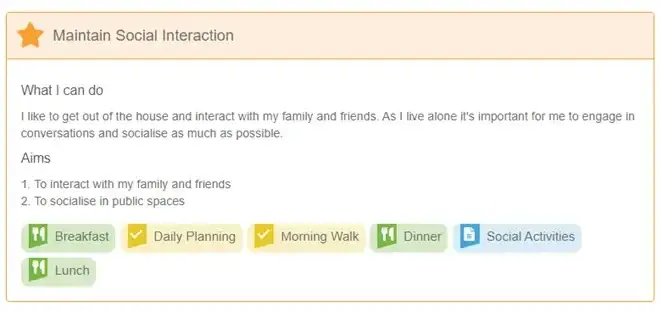
Level of independence
Determining what tasks an individual can handle on their own is essential. This not only helps in allocating resources more effectively but also empowers the individual to maintain a level of independence.
Miles' care plan
Miles enjoys cooking and managing his finances. His individualised care plan enables care managers to swiftly document these capabilities, enabling the care team to focus on more demanding areas of his care.
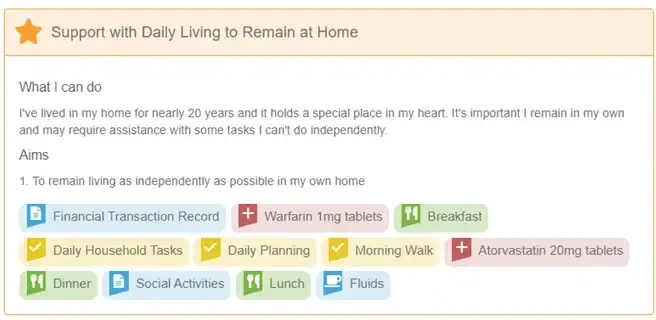
Management of medical conditions and medication
Effectively managing medical conditions and medication is crucial for ensuring the well-being of individuals in care.
A well-structured care plan can help in monitoring symptoms, administering medication, and evaluating treatment effectiveness.
Miles' care plan
Miles is prescribed two different types of medication, which is noted in his care plan, as well as when to take them. Any support needed with the management of his medication is also noted.
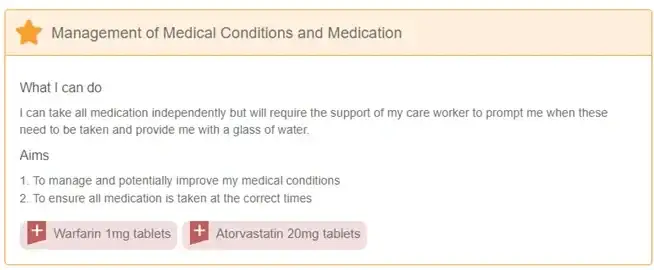
Maintain adequate dietary & fluid intake
Ensuring proper nutrition and hydration is fundamental in any care setting. A balanced diet and adequate fluid intake can significantly impact an individual’s health, from maintaining energy levels to preventing complications.
Miles' care plan
Miles can prepare his own food and drinks, but occasionally requires prompts from carers to prepare meals.
The PASS care planning app allows the care team to input dietary requirements and hydration goals, making it easier to track his nutritional intake. The app will also show if a nutritional task has been missed, ensuring that Miles receives the nutrients he needs.
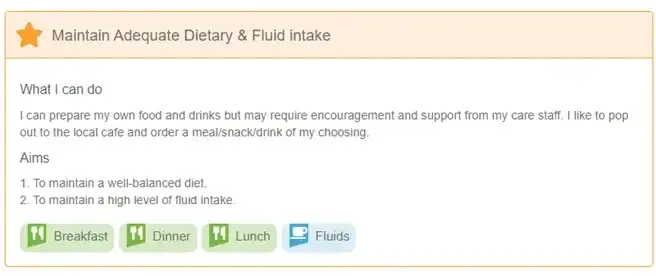
Monitoring and observation
Monitoring and observation are essential aspects of care, particularly for vulnerable individuals at risk. There should be plans in place describing what should be monitored and how observations should be recorded.
Miles' care plan
Although Miles is capable of drinking independently, he often needs reminders to stay hydrated. Carers use the PASS care planning app to track his fluid intake, enabling managers to track trends and manage changes in circumstances, while ensuring he feels understood, heard and included in his own care.
When and where will care take place?
Determining the timing and location of care is a critical aspect of effective care planning. Whether it’s in a domiciliary setting, a care home, or during reablement, the right environment can make a significant difference in the quality of care provided.
Miles' care plan
The care team visit Miles every morning, afternoon and evening. The PASS care planning app enables managers to schedule visits according to his preferences, ensuring that he receives the care he needs when and where it’s most convenient for him.
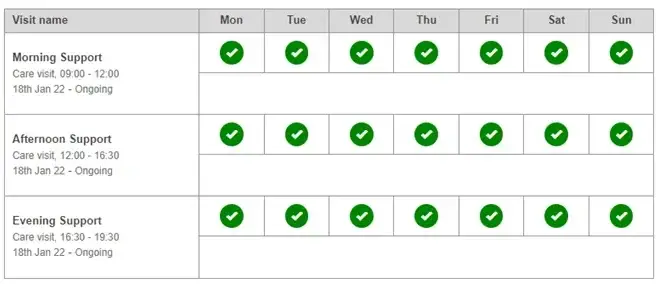
Daily planning
Organising day-to-day activities is essential for ensuring a high quality of life for individuals in care. A well-structured daily plan can help manage time effectively, allocate resources, and provide a sense of routine and stability.
Miles' care plan
Each morning, Miles requires a gentle reminder to take his prescribed medication and some encouragement to organise his day’s activities. He enjoys starting his day with a cup of coffee, a glass of apple juice, or some orange squash, along with a breakfast of his choosing.
These details are meticulously documented in the morning section of his care plan, a brief excerpt of which is provided below. Miles’ plans for the afternoon and evening are similarly recorded and incorporated into his comprehensive care plan.
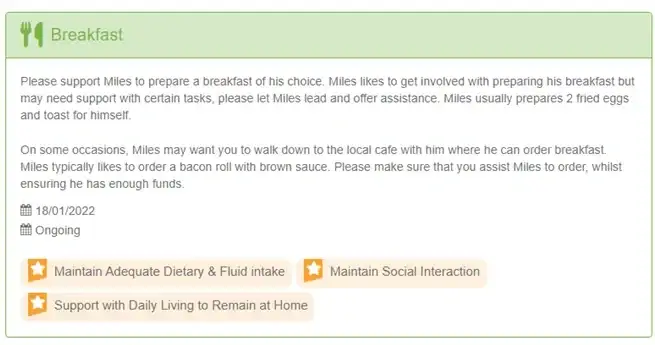
Complex care needs
Managing complex care needs is vital in providing holistic care. Understanding and supporting these needs are key to maintaining a person’s dignity and quality of life.
Miles' care plan
Miles’s continence care is managed with dignity and respect. The PASS app allows carers to note any continence issues, track patterns, and identify possible triggers. This data informs the development of a personalised care plan that respects Miles’ dignity while addressing his needs. The real-time update feature ensures any changes in Miles’ condition are promptly communicated to the care team, allowing for quick adjustments to his care plan and ensuring his continence needs are managed effectively.
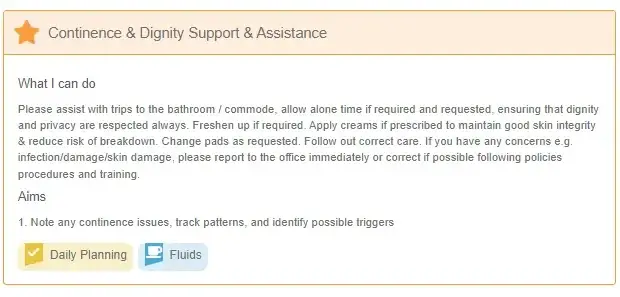
Risk assessment
Conducting a thorough risk assessment is a critical component of care planning. Identifying potential risks and implementing strategies to mitigate them is essential for ensuring the safety and wellbeing of care recipients.
Miles' care plan
Miles’s care plan includes a detailed risk assessment, focusing on fall prevention, self-neglect, and monitoring for signs of dementia. The PASS software is utilised to create and maintain this assessment. It allows carers to document potential hazards and implement preventive measures.
The app’s reporting system also helps carers remain vigilant for signs of self-neglect, such as poor hygiene or missed meals, and for symptoms indicative of dementia. This proactive approach ensures that risks are managed effectively, providing a safe environment for Miles and supporting his overall health and safety.
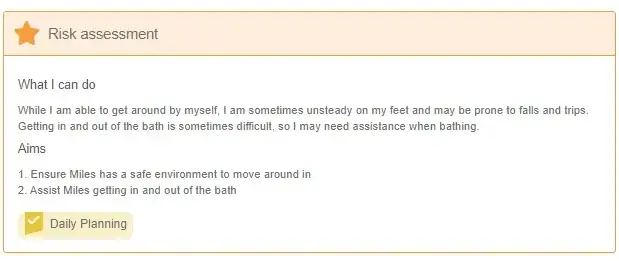
The complete care plan example
After speaking to Miles, his family, his friends, and his multidisciplinary team, we’ve now crafted a highly personalised care plan, focussing on Miles’ preferences and needs.
We know what tasks Miles can handle on his own, and what he needs help with. We also understand what type of medication he takes and where and when care will be delivered.
This care plan will empower care providers to deliver efficient and effective care, while tools like the PASS care planning app can facilitate easy documentation and coordination among all those involved in Miles’ care.
Tip: It’s important to remember that this is just one example of a care plan. No individual is the same, and each will have their own complex set of healthcare needs and preferences. Here’s a list of other elements you should consider when creating a care plan for your service user:
- Comfort and assurance during end-of-life care
- Emotional and psychological health
- Health autonomy and independence
- Personal hygiene and appearance
- Sensory abilities
- Management of dementia related behaviour
- Support with mobility while ensuring safety
- How care will be paid for and entitlements
How do you write a care plan?
Now we’ve looked at what’s included in a care plan, let’s talk about creating one.
Creating a care plan might sound complex, but with the right tools – like a digital care planning app – it becomes a straightforward process. Scroll through the timeline to learn about the steps involved:
Assessment
Set goals
Develop the plan
Implement and monitor
Document
Review and adjust
Digital versus paper care plans
While it’s possible to draft care plans using Word templates and print them out, the shift towards digital care social records (DCSRs) is rapidly gaining momentum among care providers. According to the latest statistics, the adoption of digital social care records is now more than 50%.
Click on each of the tabs below to see why digital is often the better choice for writing a high quality personalised care plan:
Efficiency
Digital care plans optimise the care planning process from start to finish. They’re quicker to set up, easier to update, and simpler to share. This efficiency frees care providers to devote more time to actual caregiving and less to administrative duties.
Accessibility
One of the major perks of digital care plans is their availability online. Whether you’re a care provider operating across multiple locations or a family member keen to stay updated, these plans can be accessed anytime, anywhere.
Real-time updates
With digital platforms, care plans are always current. Any alterations or new details can be instantly updated and shared to all parties involved, ensuring the plan remains up-to-date and relevant.
Collaboration
Digital care plans encourage teamwork among everyone involved—care providers, caregivers, and family members alike. This open line of communication guarantees that everyone is aligned and can contribute valuable insights to the care plan as needed.
Data accuracy
Switching to digital also minimises the risks tied to manual data entry errors. Digital care plans come with built-in prompts and validations to certify that all information is both accurate and comprehensive, thereby enhancing the overall quality of care.
Key takeaways
With a well-structured care plan and the capabilities of digital care planning apps, life for care providers and care receivers like Miles becomes significantly easier.
Each stakeholder in the health and social care process is aligned, well-informed, and works cohesively towards a common goal: better, more personalised care.
- Understanding care plans: Care plans are essential personalised roadmaps in health and social care, tailored to address individual needs, preferences, and goals.
- Creating a care plan: Crafting an effective care plan involves thorough assessment, setting SMART goals, planning actions, and continual monitoring and adjustment.
- Benefits of digital care plans: Digital care plans excel in efficiency, accessibility, real-time updates, improved collaboration, enhanced data accuracy, and data analytics capabilities, making them perfect for writing high-quality, personalised care plans.
Ready to create a care plan?
PASS makes care planning simple and straightforward, with intuitive tools, checklists, and care plan templates right at your fingertips. Book your personal tour today.
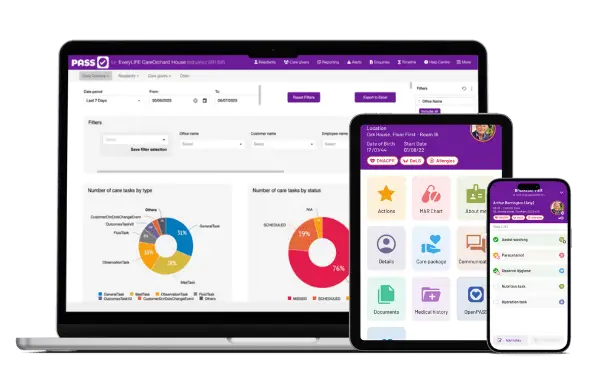
Disclaimer
The information provided in this blog is intended for general informational and educational purposes only. It is not a substitute for professional medical advice, diagnosis, or treatment. Always seek the guidance of your healthcare provider or other qualified health professional with any questions or concerns you may have regarding your health or a medical condition.

